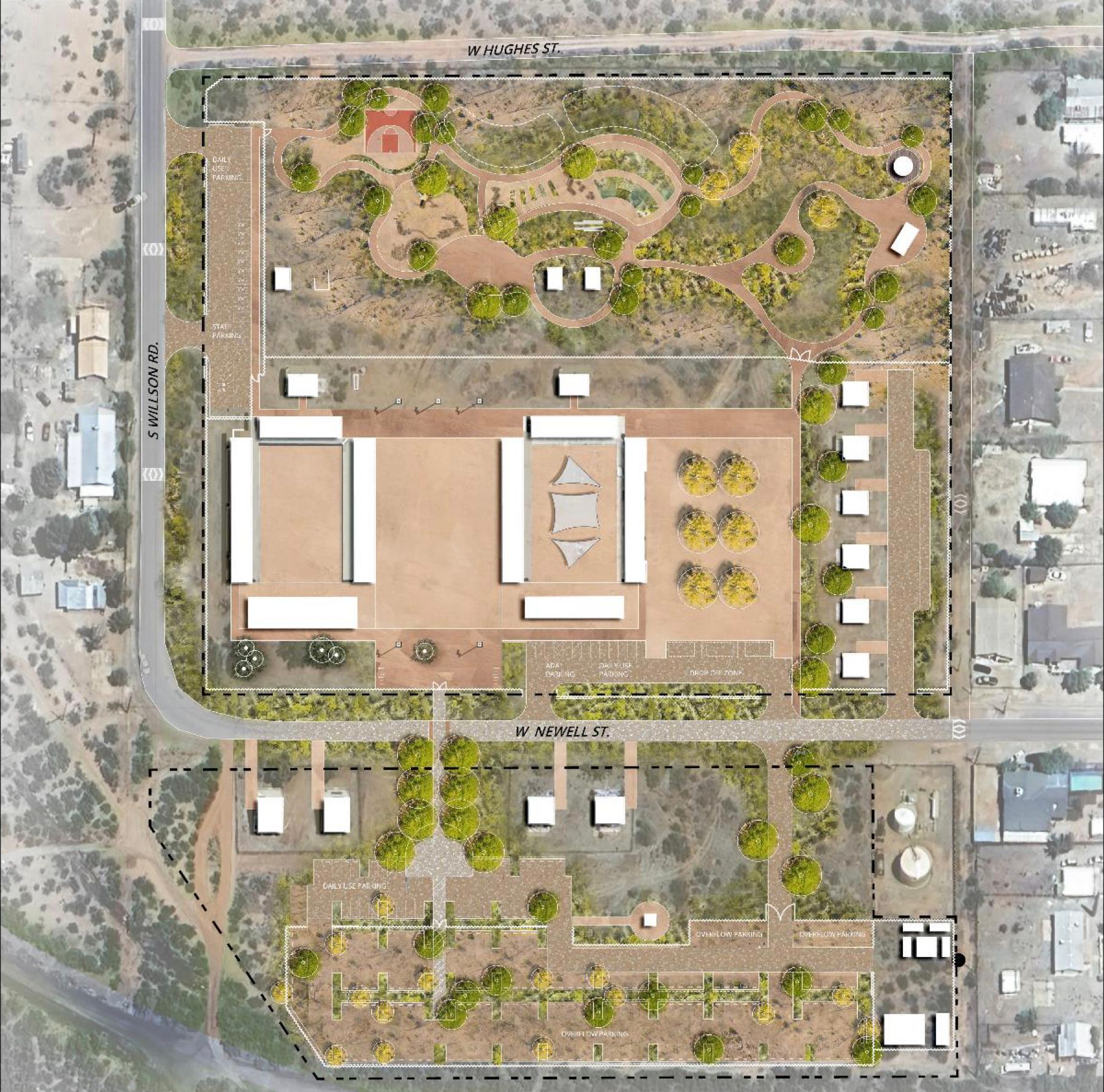Get in touch
555-555-5555
mymail@mailservice.com
A Cornerstone of Buffalo Soldier
History in Arizona
Community Feedback
Our sincere thanks to everyone who who took time to attend our public input meeting this past Tuesday, April 9. The comments and feedback we received on the site concept plan (click on the image for a larger view) and building program were invaluable. We will be taking the input we received and incorporating it into our next steps, which include application submission for a Cochise County Special Use Permit. Below is a copy of the presentation from the event.
Discover the History
With the outbreak of the Mexican Revolution in 1910, commanders at Fort Huachuca established tent camp at the point where the El Paso and Southwestern railroad line crossed the border into Mexico, at Naco, Arizona. It was initially manned by the Ninth and Tenth Cavalry, and later the 25th Infantry, collectively known as the Buffalo Soldiers. Its mission was to protect the railroad, prevent smuggling, and maintain the peace.
In 1919 a permanent camp, named Camp Naco, was constructed by the US War Department’s Mexican Border Defense Construction Project, a response to unsettled conditions along the US/Mexico border. Part of a 1,200-mile chain of thirty-five permanent military camps, Camp Naco was one of only two constructed of adobe. When the camps were decommissioned in 1923, most were deconstructed so that their materials could be used elsewhere, but Camp Naco, built of adobe, remained in place. As a result, it remains the only camp to retain its historic integrity today.
University of Arizona Digital Collections
Our vision is to preserve Camp Naco as a destination that:
1
Honors the legacy of the Buffalo Soldiers in the American Southwest
2
Advances the diverse arts, culture, & history of the Arizona Borderlands
3
Serves as a community resource for
the residents of Naco, Arizona
Naco Heritage Alliance
Thanks to the efforts of a dedicated group of archaeologists, military historians, Buffalo Soldiers and local citizens, a non-profit 501(c)3 organization, the Naco Heritage Alliance, was created to preserve Camp Naco. Because of their work, Camp Naco was purchased by the City of Bisbee in 2018, and four years later was named one of the 11 Most Endangered Historic Places by the National Trust for Historic Places, bringing national attention to the need to save the site. That same year an award-winning Story Map created by a team led by The University of Arizona students highlighted the rich history of the Camp, illuminating the important role of the Buffalo Soldiers as effective peacekeepers within the segregated military of the period. Combined, these milestones paved the way for substantial grant funding in 2022 from both the Mellon Foundation and the State of Arizona to rehabilitate Camp Naco.
In 2023, the City of Bisbee initiated hiring a team of specialists to begin rehabilitation efforts and to pave the way for a lasting Naco Heritage Alliance to guide the process. Through a series of stakeholder meetings and events, we are reaching out to the local community, as well as those groups who will benefit from the rehabilitation, to explore a wide range of future uses for Camp Naco, both historical and contemporary.
The Naco Heritage Alliance respectfully acknowledges that Camp Naco resides on the ancestral lands of indigenous peoples, including the Sobaipuri and Chiricahua Apache. We, as an organization, are committed to building sustainable relationships with the affiliated descendant tribes of the Camp Naco site through educational and community outreach programming to ensure their history is honored and not forgotten.
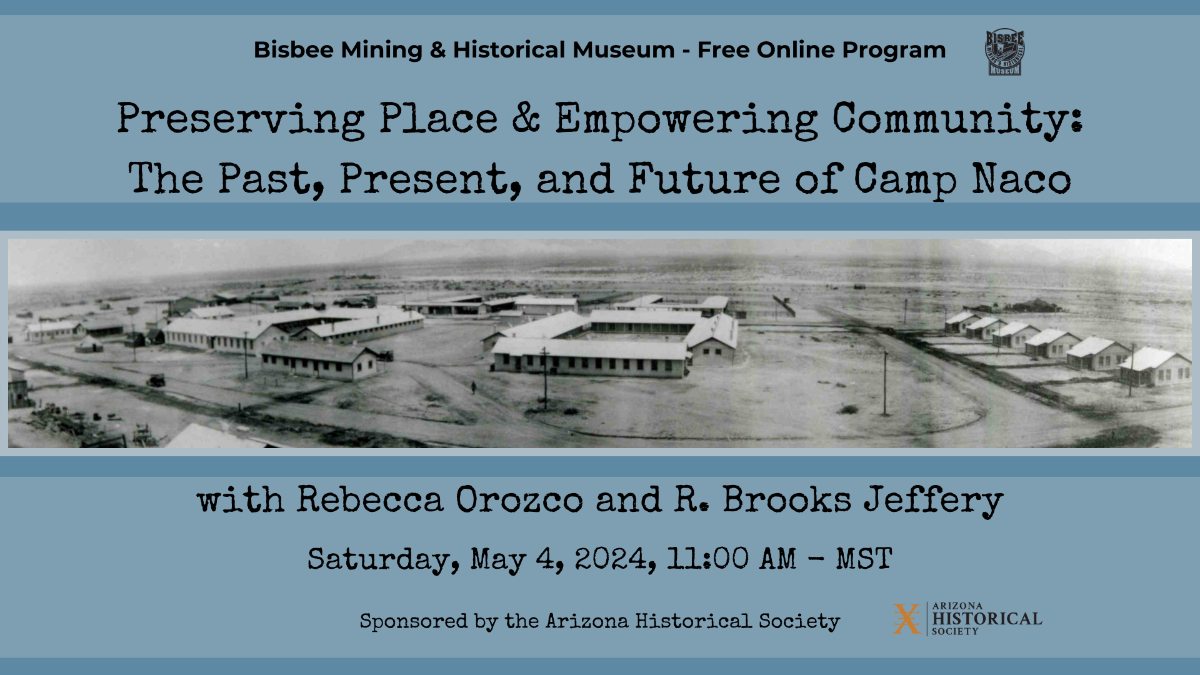
By Mark Costa
•
16 Apr, 2024
Preserving Place & Empowering Community: The Past, Present, and Future of Camp Naco with Rebecca Orozco and R. Brooks Jeffery Saturday, May 4, 2024, 11:00 am – MST A Free Online Program sponsored by the Arizona Historical Society Presented by the Bisbee Mining and Historical Museum Register at https://us06web.zoom.us/webinar/register/WN__yn-tSfVTQCGVR-OyE7YUw#/registration Camp Naco is a cornerstone of Buffalo Soldier history in Arizona and represents the proud tradition of Black military regiments after the Civil War. The Camp's 17-acre site and 100+ year-old adobe buildings sit just 600 yards north of the US-Mexico border in the community of Naco Arizona and reside on the ancestral lands of the Chiricahua Apache. In 2022, the City of Bisbee and Naco Heritage Alliance received $8.1M in funding support, initiating a 4-year journey to 1). Preserve and rehabilitate the site's 20 buildings and open spaces; 2). Develop place-based programming to reactivate the site by interpreting its diverse cultural landscape and addressing community needs; and 3). Build organizational capacity to successfully sustain Camp Naco's mission into the future. This presentation will outline the diverse histories of the Camp Naco site, the tireless efforts to preserve its buildings, and the future vision to reactivate Camp Naco as a destination to honor its past while addressing contemporary needs in the border community of Naco Arizona. Rebecca Orozco is a third-generation resident of the border in Arizona. She recently retired from Cochise College and the University of Arizona as a history and anthropology instructor. In 2021 she was named Faculty Emeritus for Cochise College. She helped develop a cross-border studies program at Cochise College and the Center for Lifelong Learning and continues to offer non-credit history and travel programs. For the past 22 years, she has been working to save historic Camp Naco. She discovered the camp while working to develop cross-border programs for Elderhostel, an educational travel program for seniors. The abandoned adobe fort set off a quest to discover the history and then to preserve the Mexican Revolutionary War era camp built to stop the conflict from spilling across the border. After arson fires destroyed five buildings in 2006, she helped get the property transferred first to Huachuca City and then to Bisbee. The Naco Heritage Alliance was formed in 2008 and under their work, a Brownfields grant of $400,000 was secured to mitigate the asbestos from the Camp. It was listed on the National Register of Historic Places in 2012 and named one of the Eleven Most Endangered Historic Places in 2022. R. Brooks Jeffery is a heritage conservation consultant serving as Startup Executive Director of the Naco Heritage Alliance. He is a Professor Emeritus of Architecture at the University of Arizona where he had a 35-year career as a teacher, scholar, and administrator advancing heritage conservation as part of a comprehensive ethic of environmental, cultural, and economic sustainability in places throughout the world. This online program is free, but space is limited.
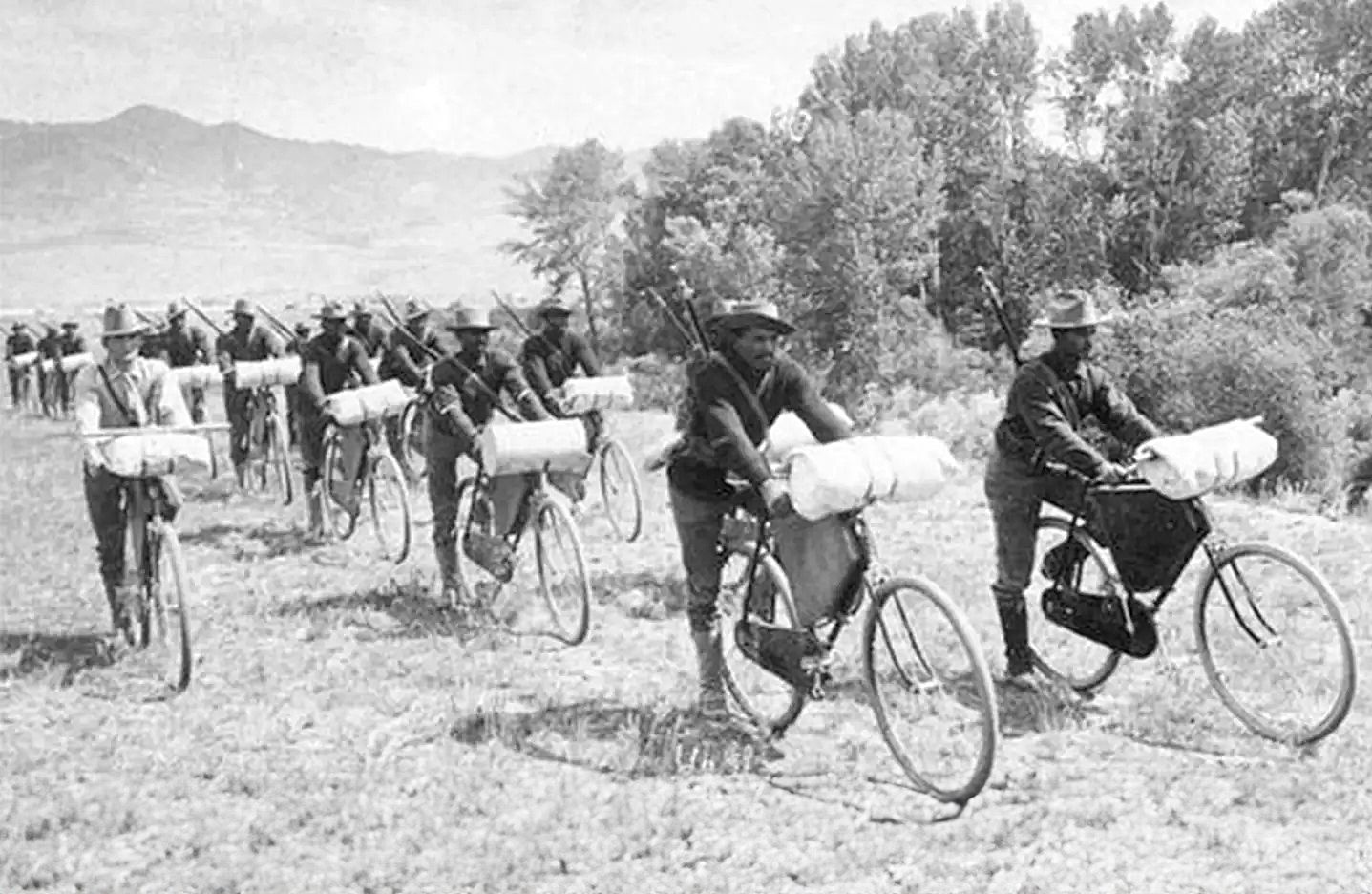
By Mark Costa
•
14 Apr, 2024
Pedaling a New Concept: The US Army Bicycle Corps-America's Rolling "Black Army" Tuesday, May 28, 2024, from 5:30-6:30pm, Free to attend Join us for a fascinating look at a little known military experiment and the brave soldiers who took part. Former Cochise College instructor Glenn Minouth will share his research at a free event, to be held at the Copper Queen Library. This lecture is a partnership event co-sponsored by the Copper Queen Library, the Naco Heritage Alliance and Camp Naco Project. During the late 1800s, it's no surprise that the widespread popularity of the bicycle attracted the attention of U.S. Army leaders. In 1892 the Army Chief of Staff communicated his interest by approving one regiment to be equipped with bicycles, to obtain all information of military importance surrounding local forts. A young officer organized the 25th Infantry Bicycle Corps whose mission was to thoroughly "test the practicality" of the bicycle for military purposes. How did the A. G. Spalding Company play into this experiment? What did each bicycle carry? Training trips of increasing lengths prepared the unit for a major 800-mile expedition. How did they complete their longest expedition 1,900 miles away? And why was an even longer trip to San Francisco from Montana not approved and what did that signal for the Corps future? Presenter Glenn Minuth was a (35-year) Department of Defense civil servant who retired at Fort Huachuca. His bachelors and graduate degrees are in geography with emphasis in cartography, geomorphology, remote sensing, and geology. He is also a graduate of the Army Management Staff College. He has been an instructor for 30 plus years at Cochise College, AZ in both credit and non-credit programs and leads field trips and lectures in the areas of: geology, geography, earth science, astronomy, ecology, weather/climate, agriculture, and military history.
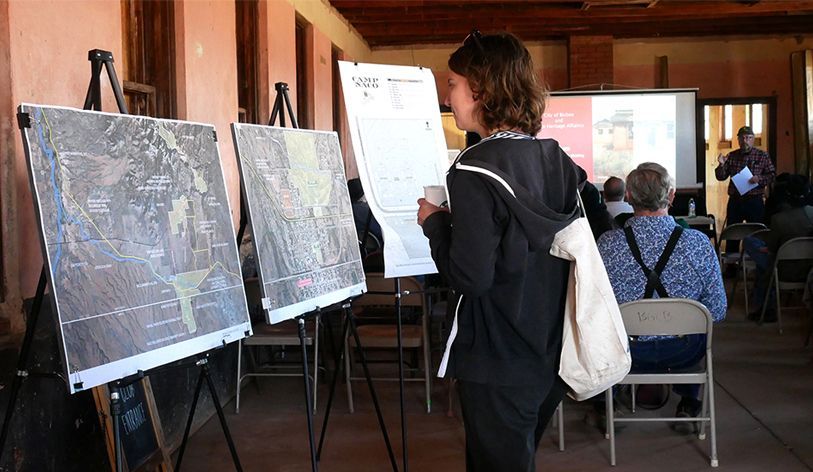
By Mark Costa
•
23 Mar, 2024
Community Input Meeting
Camp Naco Conceptual Design Plan Tuesday, April 9, 5:30 - 7:30pm
Naco Elementary School, 1911 W Valenzuela Street, Naco, AZ The public is invited to review the Site and Building Design Programs and the Conceptual Design Plan for development of the 17-acre site at Camp Naco. Developed by the design team, led by architectural firm Poster Mirto McDonald, the Conceptual Design Plan incorporates years of ideas and feedback from the community, stakeholders, and advisors, as well as input from our recent Open House. The meeting will consist of three distinct agenda items: - Review of the Site Program elements and Conceptual Site Design. - Request for formal community feedback on the Conceptual Site Design as part of the Special Use Permit application to Cochise County. - Review of the Program for the use of the 20 Buildings on the Camp Naco site. At the meeting, the public will have the opportunity to review program details, diagrams, and drawings of the Conceptual Design Plan, and to ask questions. This meeting will serve as the final opportunity to provide feedback before the Special Use Permit application is submitted to Cochise County. Please note this is an in-person only meeting; no virtual participation will be provided. Members of the design team and the Camp Naco Project Team will be on-hand to answer questions. Snacks and beverages will be provided, and an activity area will be set up to entertain your children if you're unable to find childcare.
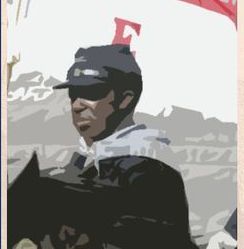
By Mark Costa
•
12 Mar, 2024
Photos by Carlos Quintero, Outreach, Program Coordinator, The Southwest Center, University of Arizona The 2024 Bazy Tankersley Southwest Laureate Lecture was presented by two community scholars, Rebecca Orozco and R. Brooks Jeffery. This event included a Friday evening lecture followed by a Saturday site tour of Camp Naco. The Friday lecture was preceded by a short memorial to honor the life and career of J.C. Mutchler (1961-2023), Associate Research Historian, Southwest Center, University of Arizona. The tribute video is available to view HERE and a video of the lecture is available HERE . In the footsteps of Bazy Tankersley, J.C. Mutchler’s career was devoted to empowering communities through their understanding of history and sense of place. No project better exemplifies Mutchler’s passion for community-based applied history than Camp Naco. Located in the Cochise County border community of Naco AZ, Camp Naco is a cornerstone of Buffalo Soldier history in Arizona but also represents the multi-layered histories of border protection, mining and railroads, Spanish exploration, as well as the history of indigenous peoples who occupied this region for millennia. Beginning in 2000, community advocates – including Mutchler – began efforts to preserve Camp Naco’s 100+ year-old adobe buildings and 17-acre site when it was under threat of outright demolition. This led to the establishment of the non-profit Naco Heritage Alliance and a 22-year journey of preservation advocacy that resulted in the recent designation of Camp Naco as one of America’s 11 Most Endangered Historic Places by the National Trust for Historic Preservation.
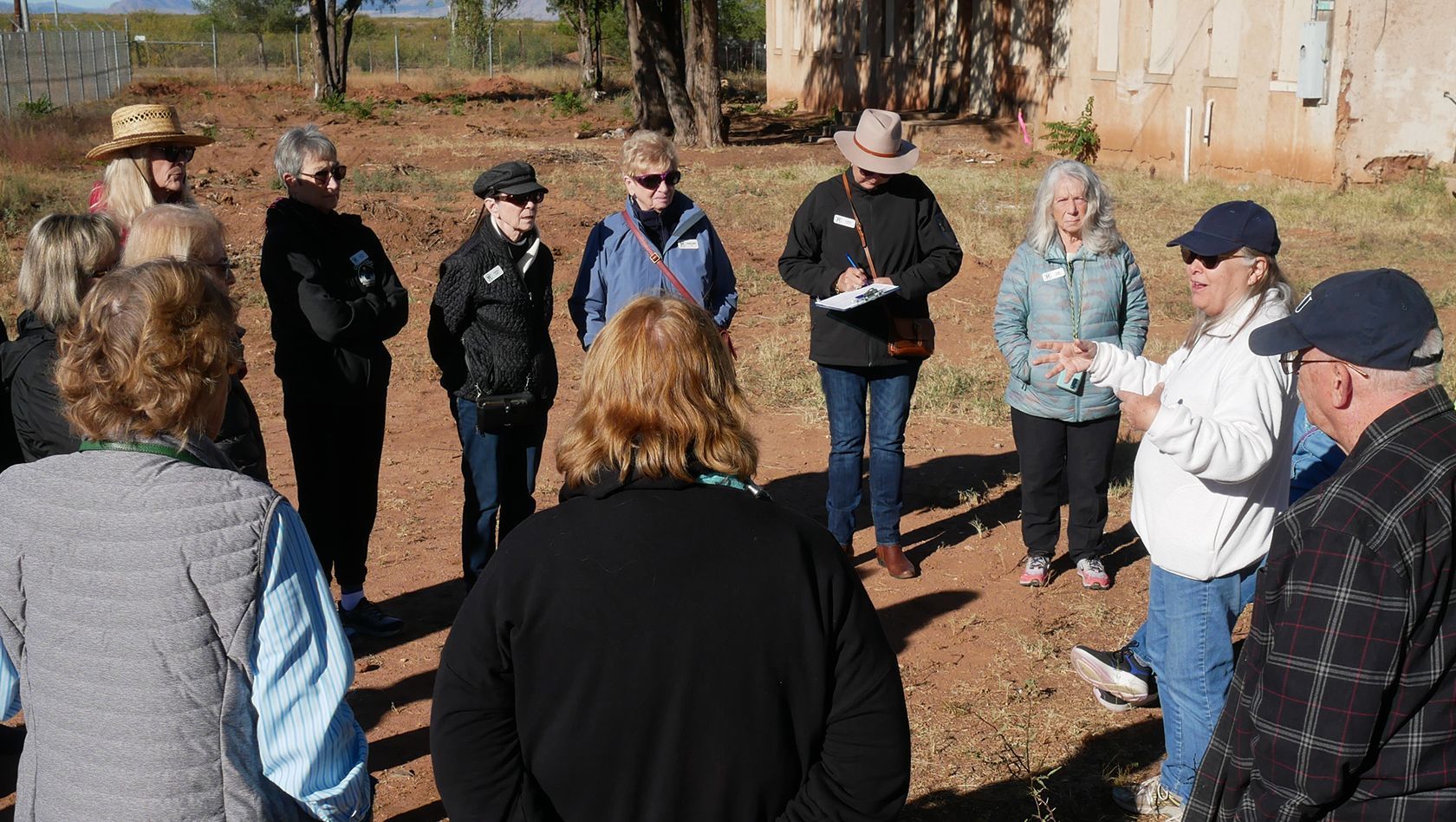
By Mark Costa
•
12 Feb, 2024
Community Input Open House Camp Naco Site Program and Preliminary Conceptual Site Plan Saturday, March 9, 10:00am – 12:00pm Camp Naco, 2118 W Newell St, Naco The public is invited to Camp Naco for an Open House to review the proposed site program elements and a preliminary conceptual site plan for development of the 17-acre site at Camp Naco. This Preliminary Site Plan and Site Development Program, developed by the design team, led by architectural firm Poster Mirto McDonald , incorporates years of ideas and feedback from the community, stakeholders, and advisors. In this informal event, the public will be granted limited access to the Camp Naco site and the ability to review program details, diagrams, and drawings of the proposed plan, to ask questions, and to provide feedback. Members of the design team and the Camp Naco Project Team will be on-hand to answer questions and gather valuable input from the public before further developing plans and applying for permits. Snacks and beverages will be provided.
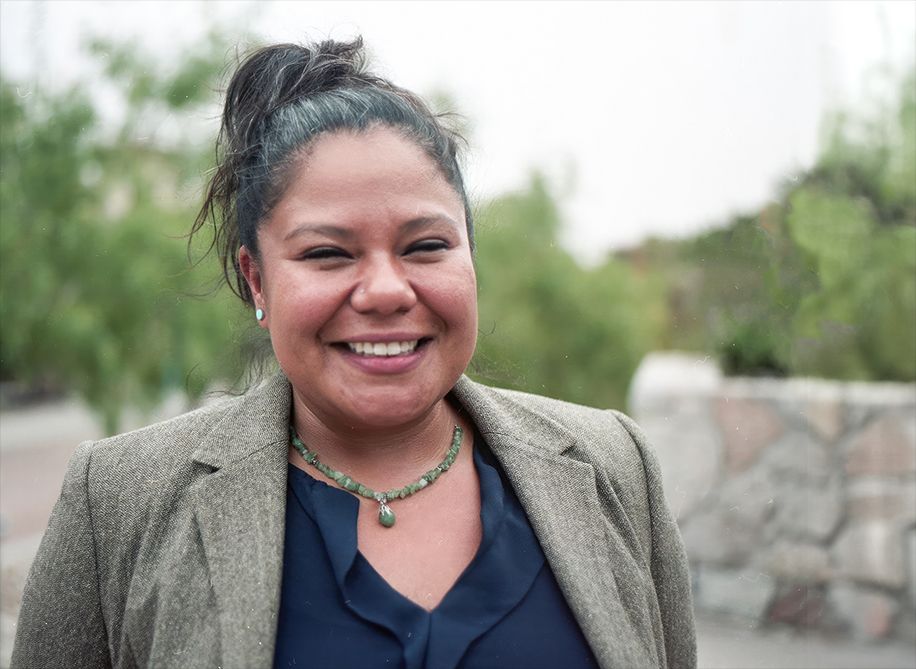
By Mark Costa
•
02 Feb, 2024
Fireplace Chat: Women on the Border Saturday, March 2 at 2:00pm Warren Peace Cafe, 123 Arizona Street, Bisbee, AZ Register at: https://forms.gle/5bQNMA3GQmsAtBTy9 Join us for a Question & Answer session with Dr. Katie Benton-Cohen and Dr. Larisa Veloz to discuss the profound contributions of women in shaping the Arizona borderlands. Larisa Veloz is Assistant Professor of History at the University of Texas, El Paso, where she teaches the histories of the U.S. and Mexico, Mexican Migration, Latin America and the Latinx diaspora, and the US-Mexico borderlands. She received an MA in Latin American and Iberian Studies from UC Santa Barbara and her Doctorate in History from Georgetown University, where she won the 2017 Glassmann Award for the best dissertation in the humanities. Her work, supported by a Fulbright IIE Garcia Robles Fellowship to Mexico and a Mellon/IIE Graduate Fellowship for International Study, led to her book, 'Even the Women are Leaving': Migrants Making Mexican America, 1890-1965 currently out and published by University of California Press 2023. It explores the histories of Mexican migrant families, focusing on women and gender relations from the early decades of circular migrations, through depression era repatriations, to the rise of the bracero contracts and parallel family migrations from the 1940s into the 1960s. Her current project focuses on the oral histories of Mexican migrant women during the latter part of the twentieth century.
Useful Links
Contact info
(520) 432-9031
info@CampNacoAZ.org
Temporary Office Location:
915 S. Tovreaville Road
Bisbee, AZ 85603
Mailing Address:
PO Box 655, Naco, Arizona 85620
Camp Naco is located at 2118 W. Newell St. Naco, AZ 85620

